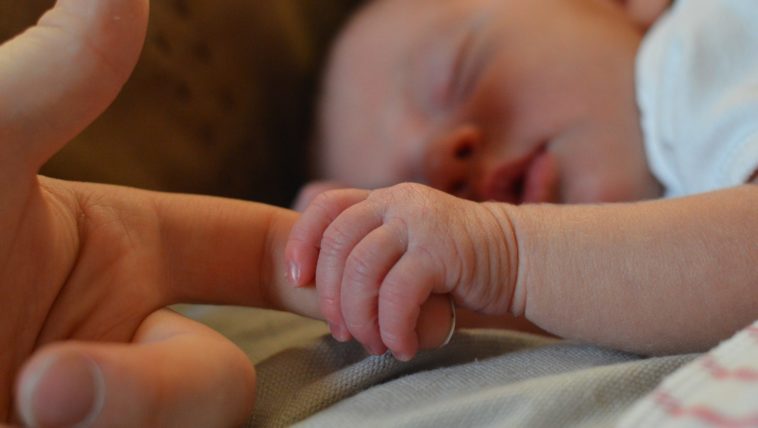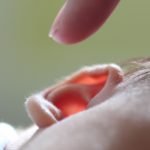The list of baby things you’ll want to buy before your baby boy arrives is, of course, endless, but here are a few items that experienced parents say they were glad to have in the house before delivery day.
- BABY CLOTHES
Little boy clothes are so cute! We all fall in love with the tiny three-piece suits (bow tie and all), and I clearly remember the jogging outfits with miniature sneakers that I just had to have for my sons. But although it is tempting to buy a carload of these adorable outfits, I learned the hard way that boys barely have a chance to go out on the town before they outgrow their infant clothing. It’s usually best to leave the buying of fancy duds to relatives and friends, and focus your purchasing power on a practical day-to-day wardrobe that includes the following:
- At least six stretchy, snap-up-the-front, one-piece pajamas with feet. These are the most useful fashion wear for newborns. They live in them!
- At least a half-dozen front-snapping tee shirts or one-piece snap-crotch tees.
- Other half-dozen pairs of socks or booties. (Booties that tie around the ankle will stay on longer than socks.)
- A hat. Whether the forecast calls for a wool hat or a sun hat, you’ll want to keep your baby’s head covered.
- A snowsuit, if you live in a cold region
2 DIAPERS
You wouldn’t be the first parent to bring home a new baby and realize an hour later that babies need diapers. Get them now. If you are using disposable diapers, look for the newborn size with a cutout
around the navel. However, don’t buy too many because your baby will quickly outgrow them. They are good for about three weeks, at the most, while your baby’s cord stump is drying out.
If you’re using cloth diapers, purchase about six dozen in size large (they can be folded to fit your baby at each stage of growth). You might also consider buying diaper liners, which absorb small amounts of urine and are easily changed without adding another full diaper to the laundry load. You’ll also need six diaper wraps, or plastic pants, and six pairs of diaper pins.
In addition to diapers, you’ll need diapering supplies. Buy a tube of ointment to prevent diaper rash, but make it a small one. You may have to try a brand or two until you find one that works best on your son. Many doctors say it’s best to stay away from commercial baby wipes when changing a newborn; they have been known to cause harsh reactions on a baby’s soft bottom. Stick to sterile cotton balls dipped in warm water for cleanups.
3 HEALTH AND GROOMING AIDS
There are a few items you might want to have on hand when your baby arrives. The following will take care of any minor health problems in the first few weeks and also keep your baby well groomed:
- Cool-mist humidifier: Dry air is tough on little nostrils. A cool-mist humidifier will help your baby breathe more easily.
- Bulb syringe: Even with a humidifier in the room, it’s likely that your baby will still get the occasional stuffy nose. Until he learns to blow his nose like the rest of us, the bulb syringe is the best way to remove mucus from a congested nose.
- Rectal thermometer: It will be a while before you can use the family oral thermometer to check your son’s temperature. The rectal type is a must either mercury or digital. And pick up some petroleum jelly to coat the thermometer before use for easy insertion.
- Rounded-tipped scissor or baby nail clipper: You’ll be amazed how quickly little baby finger- and toenails grow! The fingernails especially must be kept very short so your baby won’t scratch the delicate skin on his face.
- Comb and/or hairbrush: Adult and big-kid combs and brushes can scratch a newborn’s scalp. Get one designed specifically for newborns with soft brush bristles and rounded comb teeth.
4 BABY BATHTUB
Some folks say that you can bathe an infant in any plastic tub, in the sink, or in the bathtub with a towel under him to prevent slipping. While this is true, bathing a young son is a slippery business. That’s why a baby bathtub specially molded for infants can be a big help, especially if you’re not practiced in the art of baby handling.
The tub should be made of plastic heavy enough not to bend under the weight of a full load of water. It should have a plug for draining the water, a slip-resistant bottom, and be shaped to hold the baby in a semi-upright position on a slip-resistant surface. For a longer period of usefulness, get a tub designed for both infants and toddlers. Indentations to hold washcloths, soap, and a cup (for rinsing) are nice features.
Whatever you choose, you won’t use the tub and submerge the baby’s belly into the water until he is a couple of weeks old and the umbilical cord stump has healed. Until then, you’ll just use a washcloth or sponge for daily cleaning.
5 BABY MONITOR
An audio baby monitor lets you eavesdrop on your baby when he is out of sight. It consists of a transmitter that is placed in the baby’s room and a portable receiver that can be put in another room or carried around to hear the baby’s cries, sighs, and breathing. Volume is adjustable and some have visual cues, such as red lights that flash when a sound registers.
You might also think about going high-tech with a video monitor. These are available at most baby supply stores and are easy to install and use. They consist of a video camera that you can train on your sleeping baby and a small (4 × 5″) television monitor that you can keep nearby wherever you are in the house.
These monitors, whether audio or video, can be reassuring devices. They’re especially comforting if you’re a sound sleeper and your baby sleeps in another room, or if you have a large house and want to be alerted when your baby wakes from his nap.




